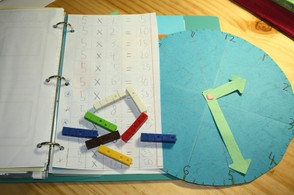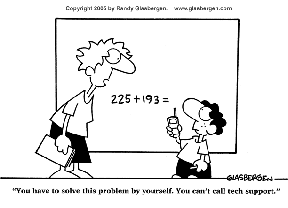Visual Learning Strategies: What to Look For in Math Learning Platforms
Visual Learning Strategies: What to Look For in Math Learning Platforms
We have all met students who have had anxiety about the subject of math. Some of us may have even been these students ourselves.
Helping Visual Learners Succeed in the Math Classroom
 We have all met students who have had anxiety about the subject of math. Some of us may have even been these students ourselves. There are a wide variety of factors that can cause anxiety in an academic setting. One common factor is not having the material presented in a preferred manner. For example, if you are a visual learner and your math teacher frequently presents lessons orally with very little visuals, it will be hard for you to retain the information. As a teacher, it is important to understand the visual components of an adaptive learning platform so that you can select one that will allow your visual learners to be successful.
We have all met students who have had anxiety about the subject of math. Some of us may have even been these students ourselves. There are a wide variety of factors that can cause anxiety in an academic setting. One common factor is not having the material presented in a preferred manner. For example, if you are a visual learner and your math teacher frequently presents lessons orally with very little visuals, it will be hard for you to retain the information. As a teacher, it is important to understand the visual components of an adaptive learning platform so that you can select one that will allow your visual learners to be successful.
Visual Learners: A Definition
The visual teaching method involves presenting concepts, ideas, data, and other information in a way that they are represented graphically and with images. Many visual learners prefer to communicate with others and to organize information through pictures, images, maps, and colors. Many visual learners are able to visualize plans, objects, and outcomes with ease.
Both cognitive psychology and educational theory research shows us that the majority of people in the world are visual learners. Thus, visual teaching methods are ideal for students of all ages. The theory of visual learning is also supported by Howard Gardner's Multiple Intelligence findings that illustrate that people have different learning preferences and strengths. Using a variety of teaching methods throughout a math curriculum orfinding an adaptive learning platform with varied teaching methods will ensure that as many students as possible will succeed.
 Visual Materials
Source: http://www.flickr.com/photos/...
|
Visual Learning
Relation to Mathematics
There are visual images throughout every concept of mathematics. Consider language such as "Estimate how many." and "Which object is further away?" The images that these phrases conjure have inherent words and numbers attached to them. When students learn to use these images, words, and numbers subconsciously, they have a much better chance at succeeding with math.
Furthermore, as students reach higher elementary school grades, they will need to understand more abstract math concepts. The ability to visualize these concepts will be a huge asset. For example, consider the following problem: "How do you find the surface area of a cube?" Being able to envision the cube will greatly help you find the solution.
Visual Learning Strategies for Adaptive Learning Platforms
 There are a wide variety of applications for mathematical visuals, including understanding relationships, indicating scale and proportion, and clarifying volume and/or area. Models will assist students with interpreting, analyzing, and discussing a wide variety of data. Students must learn to create diagrams naturally, just as they would build equations or write sentences.
There are a wide variety of applications for mathematical visuals, including understanding relationships, indicating scale and proportion, and clarifying volume and/or area. Models will assist students with interpreting, analyzing, and discussing a wide variety of data. Students must learn to create diagrams naturally, just as they would build equations or write sentences.
It is important to consider an adaptive learning platform that includes some, if not all, of the following components. Consider which ones will be most relevant for your students and keep an eye out for them as you are previewing each adaptive learning platform.
Wizzley
Views: 762
Tags:
Welcome to
THE VISUAL TEACHING NETWORK
About
© 2026 Created by Timothy Gangwer.
Powered by
![]()

You need to be a member of THE VISUAL TEACHING NETWORK to add comments!
Join THE VISUAL TEACHING NETWORK